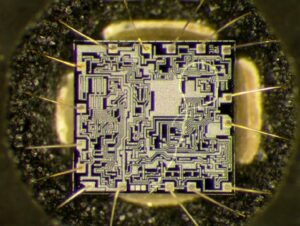Extract Heximal of Protected Microprocessor PIC18F8620 after crack secured MCU PIC18F8620 fuse bit;

A write to the high byte of Timer3 must also take place through the TMR3H Buffer register. The Timer3 high byte is updated with the contents of TMR3H when a write occurs to TMR3L. This allows a user to write all 16 bits to both the high and low bytes of Timer3 at once in order to Copy Heximal Of MCU PIC18F2455. The high byte of Timer3 is not directly readable or writable in this mode. All reads and writes must take place through the Timer3 High Byte Buffer register.
Writes to TMR3H do not clear the Timer3 prescaler. The prescaler is only cleared on writes to TMR3L. The Timer1 internal oscillator may be used as the clock source for Timer3. The Timer1 oscillator is enabled by setting the T1OSCEN (T1CON<3>) bit. To use it as the Timer3 clock source, the TMR3CS bit must also be set for the purpose of Read PIC18F2450 Microprocessor Protected Heximal. As previously noted, this also configures Timer3 to increment on every rising edge of the oscillator source. The Timer1 oscillator is described in Section 12.0 “Timer1 Module”.
The TMR3 register pair (TMR3H:TMR3L) increments from 0000h to FFFFh and overflows to 0000h. The Timer3 interrupt, if enabled, is generated on overflow and is latched in interrupt flag bit, TMR3IF (PIR2<1>). This interrupt can be enabled or disabled by setting or clearing the Timer3 Interrupt Enable bit, TMR3IE (PIE2<1>). If either of the CCP modules is configured to use Timer3 and to generate a Special Event Trigger in Compare mode (CCP1M3:CCP1M0 or CCP2M3:CCP2M0 = 1011), this signal will rese Timer3 to faciliate the process of Extract Microcontroller PIC18F2439 Memory. It will also start an A/D conversion if the A/D module is enabled from Cracking MCU Eeprom.
The module must be configured as either a timer or synchronous counter to take advantage of this feature. When used this way, the CCPR2H:CCPR2L register pair effectively becomes a period register for Timer3. If Timer3 is running in Asynchronous Counter mode when Microchip MCU PIC18F2431 Content Copying, the Reset operation may not work. In the event that a write to Timer3 coincides with a Special Event Trigger from a CCP module, the write will take precedence.

